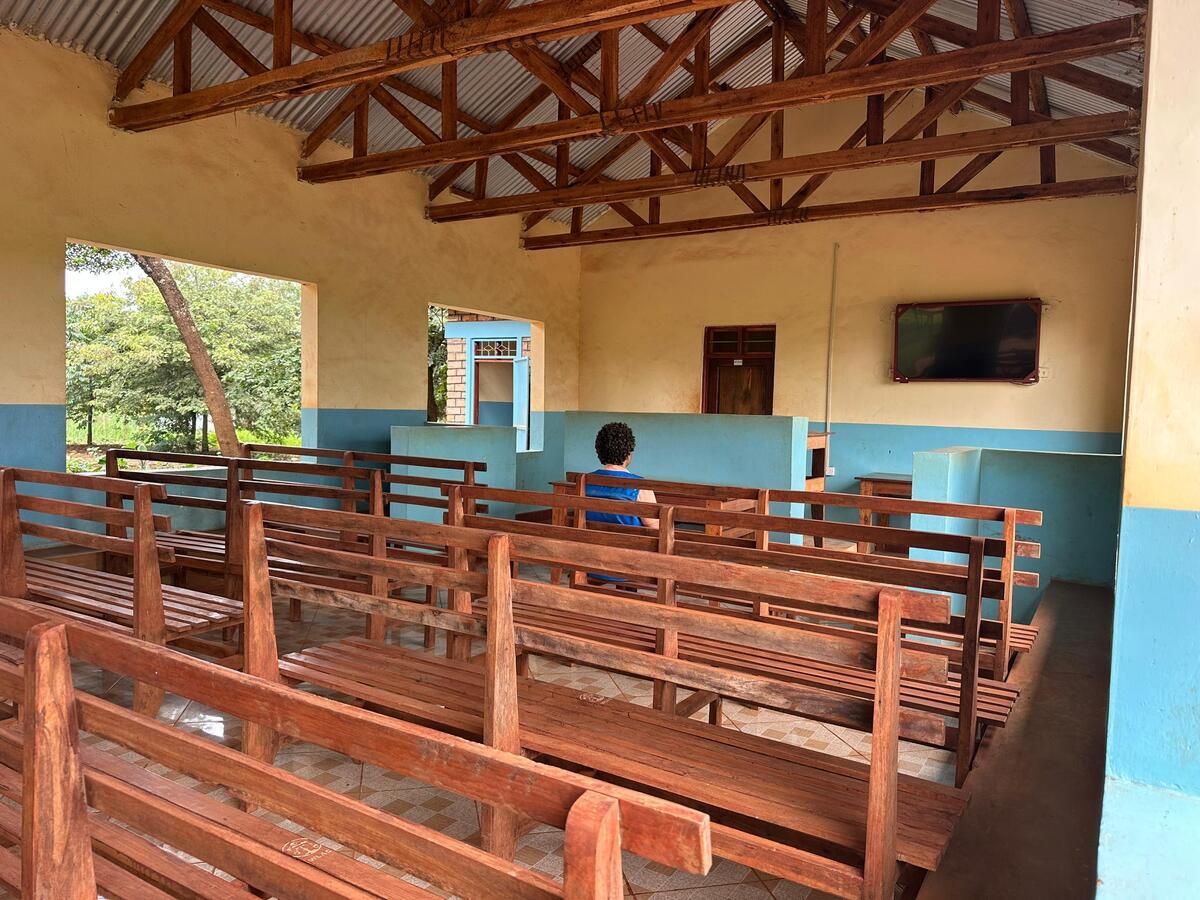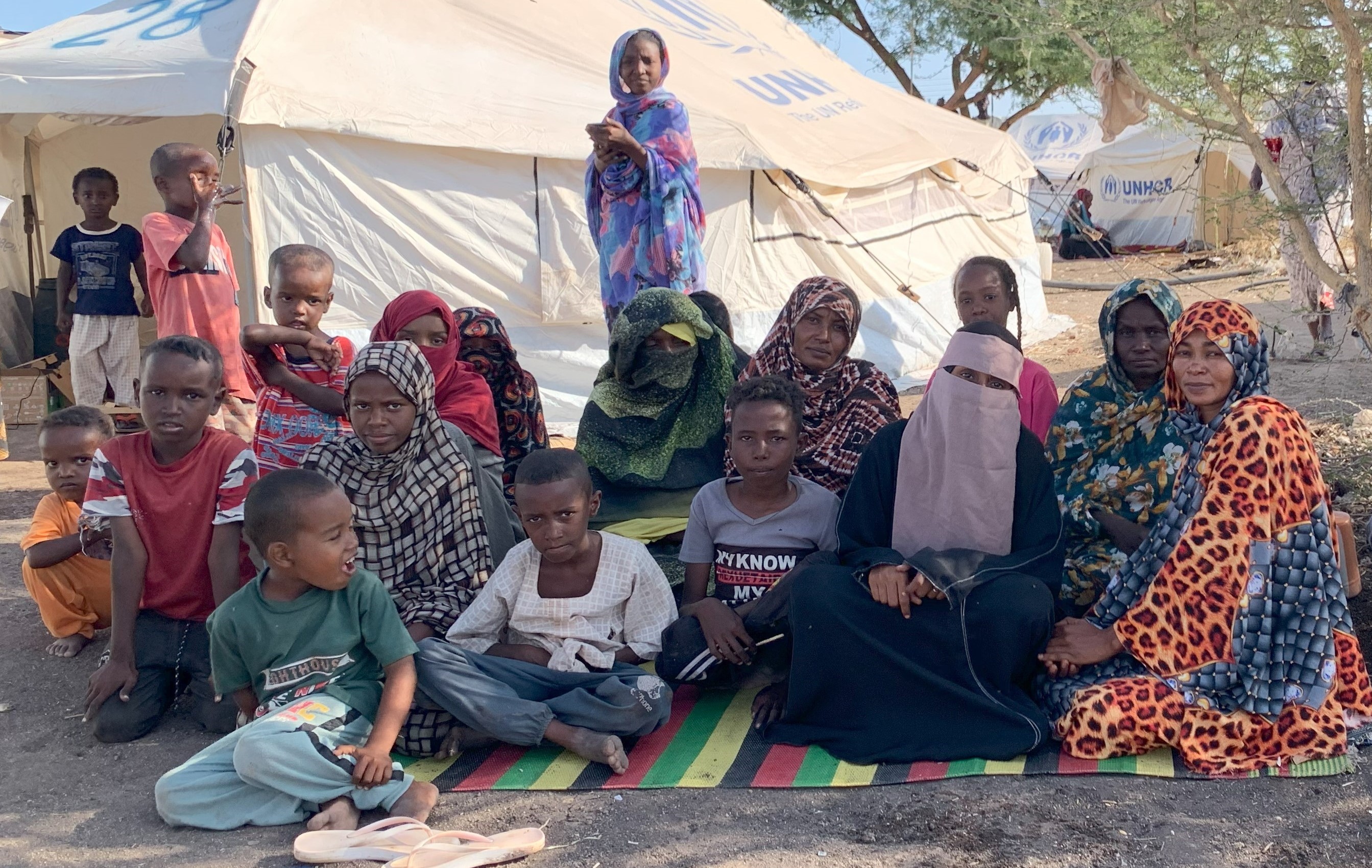As Sudan’s conflict enters a second year, hundreds flee south daily
As Sudan’s conflict enters a second year, hundreds flee south daily

South Sudanese returnee, Juma Peter Gai, 24, sits with his nieces and nephews at their shelter in Renk transit centre, South Sudan. He fled the conflict in Khartoum, Sudan, with his two sisters and their children last August.
The South Sudanese border town of Renk is the entry point for hundreds of people a day fleeing war in Sudan. More than 745,000 people have crossed the frontier since fighting erupted in the capital Khartoum in April last year, and over half a million of these are returning South Sudanese who fled for safety years ago when Sudan was safe and the south at war.
The situation now is reversed, but the results are the same: uprooted by conflict they face displacement, hardship, and uncertainty.
One of those crammed inside one of Renk’s overcrowded transit centres, Juma Peter Gai, knows little of the country to which he has returned. Juma, 24, fled Khartoum with his two sisters in August, returning to South Sudan for the first time since his family escaped violence when he was just a year old.
“What happened in Khartoum, happened suddenly,” he said of the outbreak of fighting on 15 April 2023. “We thought it would last two days, three days, but three months later we felt it was getting serious, so we decided to leave and come here to Renk. We left some of our relatives back home because we didn't have enough money to bring them with us here.”
A constant flow of arrivals
It took four days by car to reach the Joda border point in Upper Nile State where UNHCR, the UN Refugee Agency, received Juma, his two sisters and their children, transporting them by bus to the transit centre where they received humanitarian assistance such as food, water, blankets and medical care.
The constant flow of men, women and children seeking safety is overwhelming Renk’s two transit centres which were designed to hold 4,000 people, but now support more than 9,000.
The increasing needs are putting pressure on the centres’ limited resources, meaning many families are living in unsatisfactory conditions, facing poor sanitation and hygiene. The ongoing rainy season is making matters worse, washing away roads and hampering efforts to help the many South Sudanese returnees continue the long journey back to their communities.
“The situation here is dire,” said Ruth Kirui, UNHCR’s Head of Field Office in Renk. “With the current population, we have gaps in hygiene facilities and shelter. We are also worried about existing risks of health to deteriorate including cholera and other diseases that might expose the individuals here.”
Grief and trauma
Sudanese refugees are also fleeing the violence and UNHCR is working with the government of South Sudan and partners to transport them to established refugee camps and settlements in South Sudan. The closest are in Maban County, 300 kilometres to the south-east.
“The transit centre was very congested,” said Limiya Daud, a 30-year-old mother of three who now lives in a camp in Maban. “There were a lot of refugees from Sudan, and there were many people from South Sudan who were all crowded there so life was quite difficult, especially during the rainy season. You are just in a small place where you are not able to do anything.”

Every evening Limiya David sets up a table at her door where she displays some items, mostly foodstuff and onions, for sale to fellow refugees and the surrounding host community.
Limiya is still grappling with the grief and trauma of the violence that tore through Khartoum forcing her to leave. There were “dead bodies lying on the streets” as she fled, and some of her close relatives were killed. “I lost both my sister-in-law and my mother who raised me, along with other relatives,” she said.
Limiya arrived in the refugee camp in May last year and has integrated into the community, even starting a small business to supplement the humanitarian aid she receives. “I sell onions, oil, and dried okra,” she said. “I use the money to buy clothes and cater to other needs. I also reinvest the profits to expand my business and ensure that my children’s needs are met.”

Limiya sells onions to a customer at her small shop in front of her shelter in Doro refugee camp, Maban county.
Finding safety and protection
10 million people have been forcibly displaced since Sudan’s newest conflict began. Of these, around 2 million have sought refuge in neighboring countries including South Sudan, which is itself reeling from the impacts of climate change, food insecurity and intercommunal conflict.
The new daily arrivals join more than 457,000 refugees and asylum seekers from elsewhere already in South Sudan, as well as more than 2.2 million internally displaced people.
“I found safety and protection here in the camp where my children are able to access medical services,” said Limiya. “They are able to access education, they're able to get food and at the same time, they are not hearing gunshots, which is something that really scared them. I don’t have plans of going back until there is peace in Sudan.”









